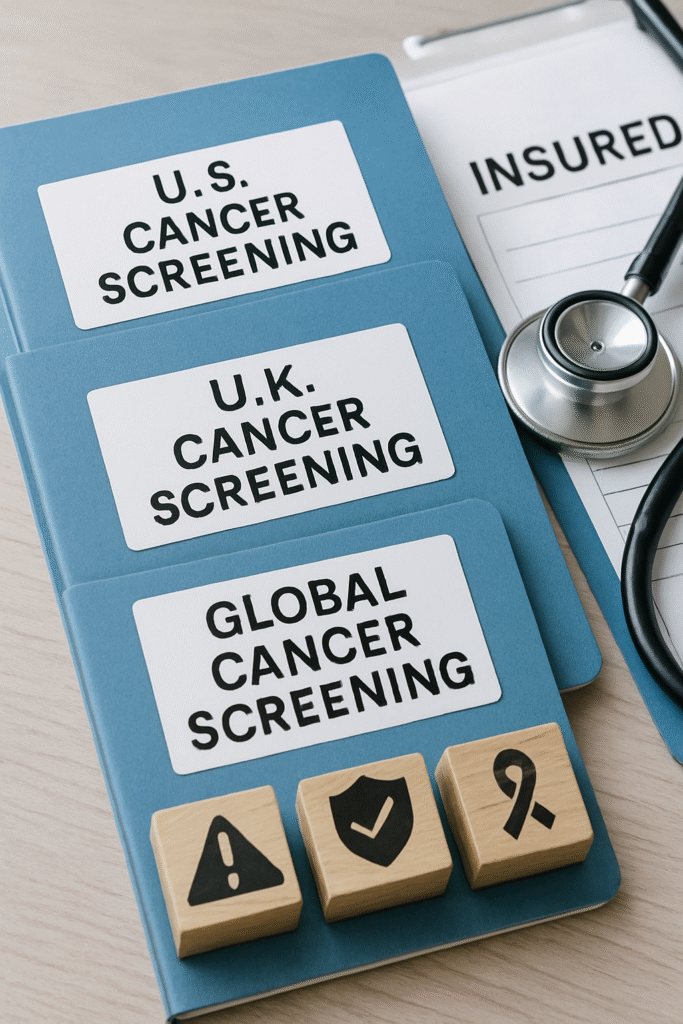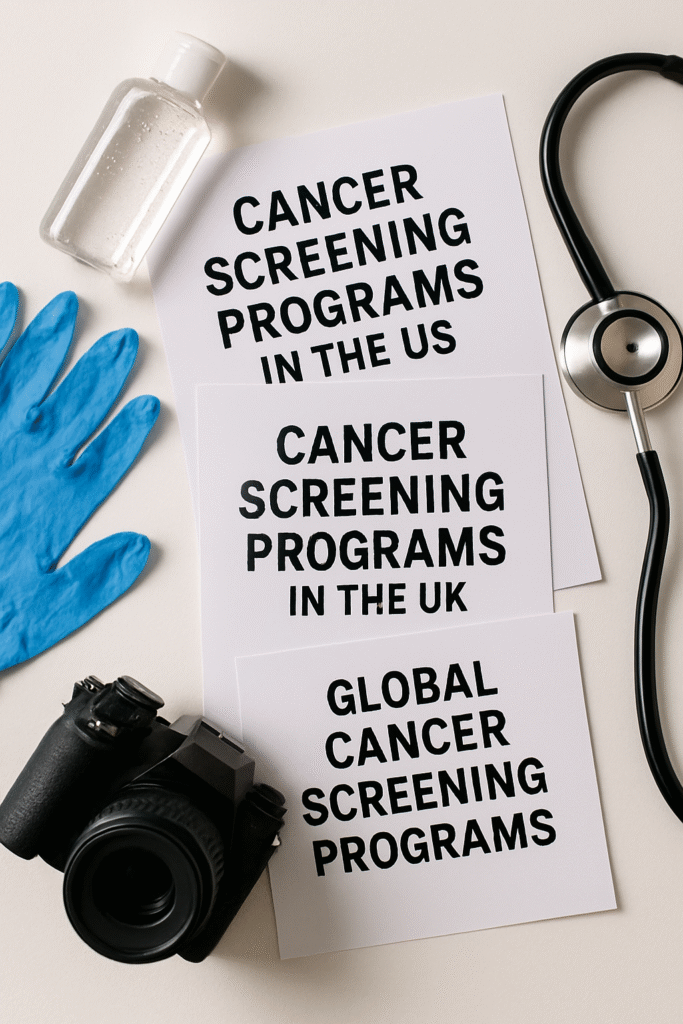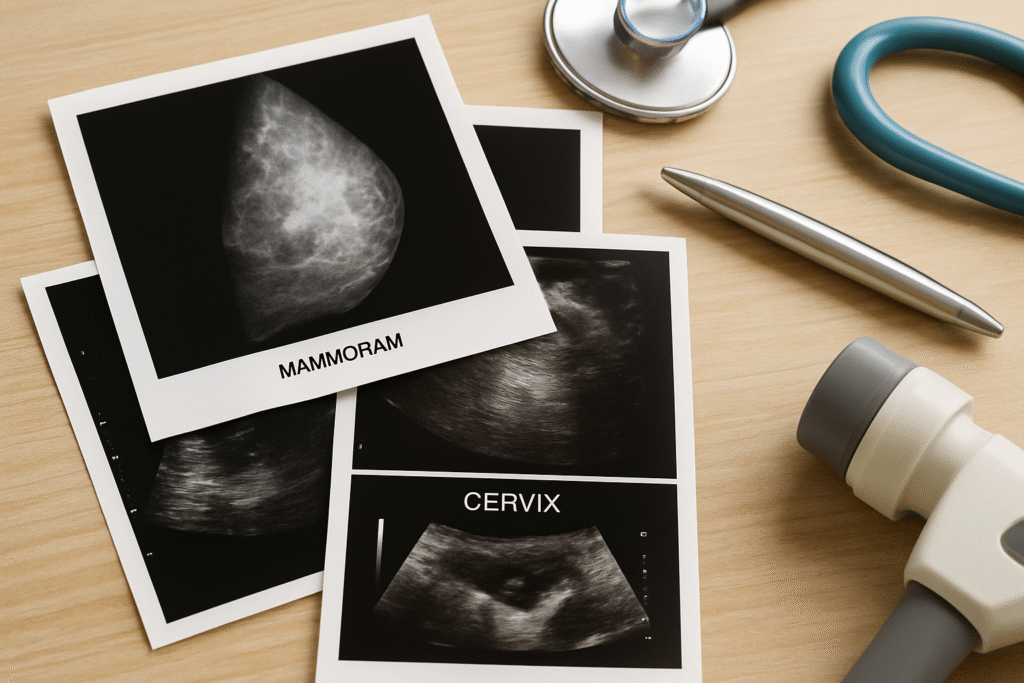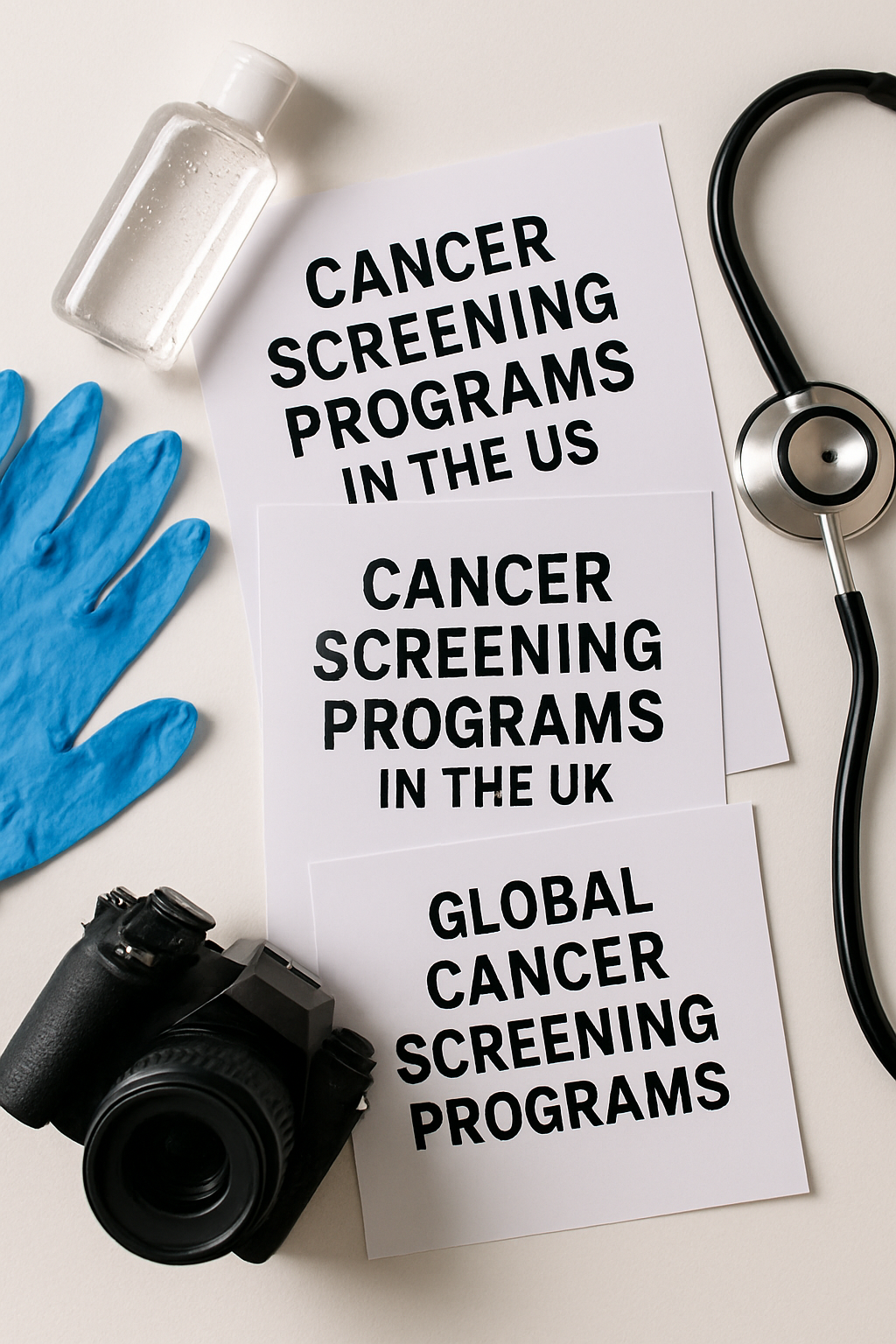Early detection is the cornerstone of cancer survival. Today’s screening protocols—from mammograms to colonoscopies to HPV tests—can catch disease long before symptoms arise, dramatically improving outcomes. In this deep dive, you’ll discover the latest cancer screening programs UK, best cancer screening US 2025, and global screening guidelines, along with practical tips and interactive tools to build your personalized screening timeline.

Table of Contents
- Why Cancer Screening Saves Lives
- US Screening Protocols: “Best Cancer Screening US 2025”
- UK’s NHS Screening Services & Uptake
- Global Screening Guidelines & Innovations
- Interactive: Build Your Screening Schedule
- Quick Hacks to Prepare for Your Next Screening
- When to Upscale: AI & Emerging Technologies
- Resources & Further Reading
- Disclaimer
Why Cancer Screening Saves Lives
Cancer screening aims to detect disease in asymptomatic individuals, allowing earlier, less invasive treatment. Key benefits include:
- Improved survival rates: Early-stage breast cancer has a 5-year survival exceeding 90%, compared to under 30% for late-stage disease.
- Reduced treatment costs: Early interventions (e.g., lumpectomy vs. mastectomy) often lower healthcare expenses.
- Quality of life: Less aggressive therapies and fewer complications enhance long-term well-being.
In 2023 alone, the CDC estimated that regular screening prevented or detected early over 250,000 cancers in the US (CDC).

US Screening Protocols: “Best Cancer Screening US 2025”
The U.S. Preventive Services Task Force (USPSTF) issues evidence-based A and B recommendations for cancer screenings. Here are the key 2024–2025 guidelines (USPSTF):
- Breast Cancer (Women 40–74)
− Mammography every 2 years (Grade B) (USPSTF). - Cervical Cancer (Women 21–65)
− Ages 21–29: Pap smear every 3 years (cytology alone).
− Ages 30–65: Choice of Pap + HPV co-testing every 5 years or HPV alone every 5 years (Grade A) (USPSTF). - Colorectal Cancer (Adults 45–75)
− Colonoscopy every 10 years, sigmoidoscopy every 5 years, or annual fecal immunochemical test (FIT) (Grade A). - Lung Cancer (Adults 50–80 with 20+ pack-year history)
− Annual low-dose CT scan if they currently smoke or quit within the past 15 years (Grade B).
Why these matter: Each recommendation balances benefits (mortality reduction) against harms (overdiagnosis, procedural risks). Following these “best cancer screening US 2025” standards can reduce mortality by 20–50% in screened cancers.
UK’s NHS Screening Services & Uptake
The NHS offers five population-based screening programs for eligible age groups; uptake rates vary by region (NHS England):
- Breast Screening (Women 50–71)
− Mammography every 3 years; 8.5 cancers detected per 1,000 women screened in 2023–24 (NHS England Digital). - Cervical Screening (Aged 25–64)
− Cytology or HPV biennial/co-testing; coverage ~70%—below the 80% target (The Guardian). - Bowel Cancer (Aged 56–74)
− FIT every 2 years; 46.3% attended diagnostic tests within 14 days of referral in 2023–24 (GOV.UK). - Abdominal Aortic Aneurysm (Men 65)
- Diabetic Eye Screening (Diabetics)
Key insight: Despite program availability, participation gaps remain—particularly in cervical and bowel screening, where only ~66–70% attend (The Guardian). Targeted outreach and reminder interventions can boost coverage.

Global Screening Guidelines & Innovations
The International Agency for Research on Cancer (IARC) and World Health Organization (WHO) provide global screening guidelines for cervical, breast, colorectal, and lung cancer. Highlights include:
- Cervical Cancer: HPV primary screening recommended every 5–10 years starting at age 30 in high-income countries; visual inspection with acetic acid (VIA) in low-resource settings (IARC).
- Breast Cancer: Mammography every 2 years for women 40–74 globally; consideration for ultrasound adjuncts in dense breasts.
- Colorectal Cancer: FIT or stool DNA tests annually in medium/high-resource settings; flexible sigmoidoscopy every 5 years in lower-income regions.
- Lung Cancer: Risk-based low-dose CT screening pilots under evaluation in Europe and Asia; formal recommendations pending IARC Handbook Volume 21 (2026) (IARC).
Emerging focus: Equitable access in low- and middle-income countries (LMICs), capacity building for VIA, mobile mammography, and global data harmonization via IARC’s Global Cancer Observatory (Global Cancer Observatory).
Interactive: Build Your Screening Schedule
Use this screening quiz to generate a personalized timeline. Answer the five questions below—then map your next screening dates.
- Age & Gender:
- Family History of Cancer?
- Smoking History?
- Personal Medical History (e.g., diabetes)?
- Previous Screening Dates?
Based on your responses, you should:
- Schedule a mammogram if you’re a woman aged 40–74 (US) or 50–71 (UK).
- Book cervical screening if you’re 21–65 (US) or 25–64 (UK).
- Plan colonoscopies/FIT at age 45–75 (US) or 56–74 (UK).
- Discuss low-dose CT if you meet lung screening criteria (current/former heavy smokers).
Printable Schedule Infographic:
- Download a visual timeline outlining all due dates and screening types.
Quick Hacks to Prepare for Your Next Screening
- Calendar Reminders: Set phone alerts 3 months, 1 month, and 1 week before.
- Medical Records Review: Gather prior results—print or request digital copies.
- Healthy Habits Boost: Hydrate well, avoid caffeine 2 hours before mammograms.
- Ask About Sedation Options: For anxious patients facing colonoscopy.
- Transportation Plan: Arrange rides if sedation is needed.
Pro Tip: Join a local support group or online forum to share experiences and tips. Feeling informed reduces anxiety and missed appointments.
When to Upscale: AI & Emerging Technologies
The next frontier in cancer screening programs UK and beyond is AI-assisted imaging:
- Digital Mammography + AI: Studies show AI can reduce false negatives by 20% and false positives by 10%.
- Automated Cytology: AI algorithms interpret cervical samples, improving throughput in high-volume labs.
- CT Image Analysis: Deep learning models flag early lung nodules that human readers might miss.
Pilot programs in the US (FDA-approved AI tools) and NHS trusts (AI in breast screening) are already underway—promising higher accuracy and faster turnaround.
Resources & Further Reading
- USPSTF Screening Recommendations (US): https://www.uspreventiveservicestaskforce.org/ (USPSTF)
- Cancer Screening Tests (CDC Overview): https://www.cdc.gov/cancer/prevention/screening.html (CDC)
- NHS Cancer Screening Services (UK): https://www.nhs.uk/conditions/cancer-screening/ (NHS England)
- IARC Cancer Screening Fact Sheets (Global): https://screening.iarc.fr/ (IARC)
- IARC Global Cancer Observatory: https://gco.iarc.fr/ (Global Cancer Observatory)
Disclaimer
This blog post is for informational purposes only and does not substitute professional medical advice. Consult your physician or local health authority before making decisions about cancer screening. All external links are to reputable sources and were valid at the time of publication. All images used in this article are royalty‑free or licensed for commercial use and are provided here for illustrative purposes.
